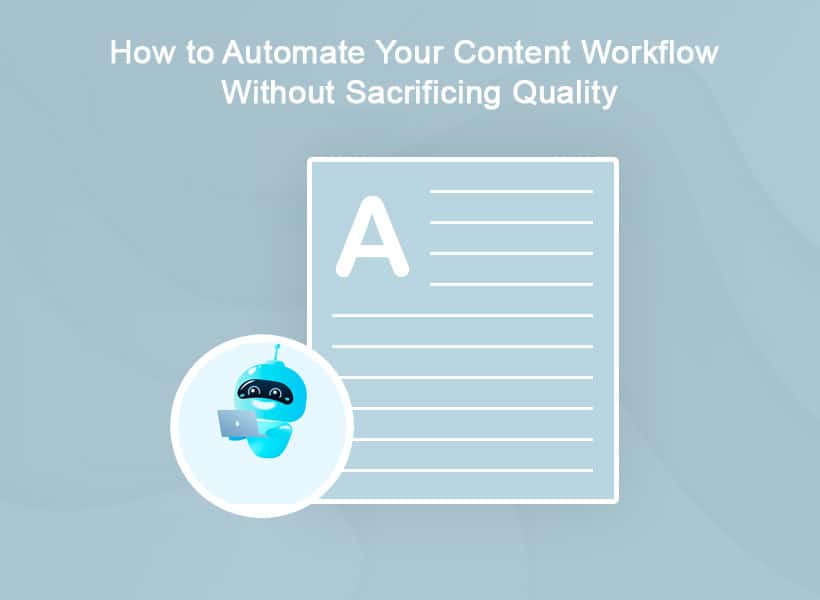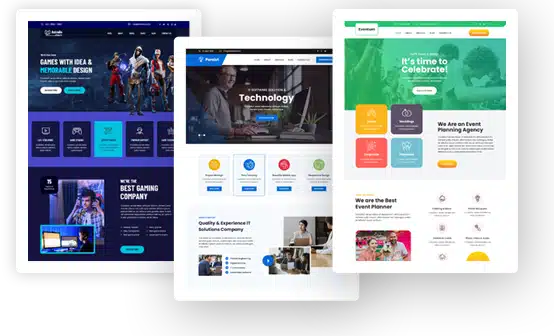How to Automate Your Content Workflow Without Sacrificing Quality

Creating content can be a lot of fun—a way to tell stories, share insights, and build a relationship with your audience. But as deadlines mount, feedback loops extend, and teams find it hard to stay aligned, that excitement can quickly turn into burnout. Automation is often heralded as the solution, but many fear it impairs quality. The good news? The good news is that with the proper approach and tools, you can harmonizing your content workflow without sacrificing the bastion the your message.
Let’s see how we can achieve the sweet balance between efficiency and excellence.
Understand Your Existing Workflow First
Before you automate anything, it is important to map out your current workflow. Consider this as a foundation for an easier, quicker system that is still reflective of your brand voice and values.
Start by analyzing how content moves from idea to publication. Who’s involved? What tools are being used? Where are the delays happening? This is the step of discovering bottlenecks and where automation will have the greatest impact—not necessarily for the sake of speed, but for improving consistency and lowering manual errors.
Once you understand your workflow completely, you can be deliberate about what to automate and what requires a human touch.
Identify What Can Be Automated (and What Shouldn’t Be)
Automation is not a one-size-fits-all approach. While it can do wonders in certain areas, attempting to automate everything can lead to bland content and lost opportunities for interaction.
Operations that usually gain from automation are:
- Writing on-brand copy: AI assistants that have been trained on your company’s tone, guidelines, and previous materials can write first drafts of blog posts, product descriptions, or support responses—saving time while maintaining messaging consistency.
- Scheduling content: Buffer or Hootsuite can schedule social posts so your team isn’t posting manually.
- Editing and grammar checks: AI tools like Grammarly help catch errors quickly and maintain brand consistency.
- Image resizing and optimization: Services like TinyPNG or Canva Pro can help standardize visuals across platforms.
- Approval workflows: Platforms like Trello or Asana can automate task assignments and status updates.
However, aspects like storytelling, tone, brand messaging, and high-level editing should still involve human oversight. These are the things that make your content unique and resonate with your audience.
CustomGPT.ai: A Smarter Way to Integrate AI in Your Workflow
Whereas most automation solutions are piecemeal, CustomGPT.ai is an integrated means of adding intelligent automation to the entire content lifecycle. It enables companies to build custom AI assistants that learn from their own content, style guides, and data.
For example, think about having a content assistant who knows your voice, product information, customer avatars, and even in-house guidelines. With CustomGPT.ai, you can create first drafts of blog posts, FAQs, product descriptions, or customer emails that already sound on-brand.
This equates to less time writing from scratch and more time optimizing, refining, and strategizing—the aspects of content creation that really need human imagination.
How CustomGPT.ai Enhances Quality While Automating
Rather than using generic templates or out-of-the-box AI, CustomGPT.ai enables you to upload your documents, training data, and existing content. It then leverages this custom data to create more accurate, contextual, and goal-focused outputs.
Benefits include:
- Reduced rewriting time: First drafts need fewer revisions.
- Consistent tone and voice: AI trained on your brand avoids off-tone content.
- Quick scalability: Handle more content requests without burning out your team.
Build a Hybrid Team: Humans + Machines
Once automation enters the scene, your content team’s dynamics can change—and that’s a positive. Writers, editors, and strategists can now concentrate on what they’re best at while automation does the bulk of the work.
But effective AI workflow automation involves careful integration. You want your staff to be empowered by these tools, not replaced by them. Nurture experimentation. Allow your writers to work together with AI tools on ideation or initial drafts. Engage editors in shepherding AI-created content through its final phases to ensure that it resonates with all the right notes.
This collaborative process retains quality while increasing productivity.
Roles That Benefit Most from Automation Support
When implemented well, automation doesn’t replace jobs—it enhances them. Here are some examples:
- Content strategists: Use AI to analyze past content performance and suggest new topics.
- Writers: Generate outlines or initial drafts, allowing more time for creativity.
- Editors: Focus on tone, clarity, and structure instead of grammar fixes.
- Marketing managers: Automate reporting and KPI tracking for campaign performance.
Establish Feedback Loops to Improve Over Time
Automation is not a “set it and forget it” solution. Like any part of your strategy, it needs regular tuning to stay effective.
Create feedback mechanisms to evaluate what’s working and what isn’t. This can involve regular team check-ins, review sessions, or even customer feedback on published content. If you’re using tools like CustomGPT.ai, retrain your model with new data as your business evolves.
The more refined your systems become, the more value automation will bring.
Key Metrics to Track for Quality Assurance
Don’t rely on intuition alone to judge content quality. Use measurable indicators to stay on track:
- Engagement rates: Are readers clicking, sharing, and commenting?
- Time on page: Are visitors staying long enough to consume the content?
- Conversion rates: Is content moving people through your funnel?
- Revision volume: Are AI-generated drafts requiring too many changes?
By monitoring these metrics, you can make informed decisions about how to tweak your automation strategy.
Avoid Common Automation Pitfalls
Despite its advantages, automation can go wrong if not implemented thoughtfully. One common mistake is over-automating to the point where content loses its soul. Readers can sense when something feels robotic or overly templated.
The second is overlooking training and onboarding. If your staff isn’t aware of how to properly utilize a new tool, it turns into more of a headache than a help. Using an onboarding template can make the process more consistent and ensure no critical steps are missed. Ensure everyone has the support and training they require to use automation tools correctly.
Last but not least, don’t forget about the ethics. Transparency is important—if AI is involved in content production, own up to it. Keeping your audience’s trust is always worth your while.
Conclusion
Content automation isn’t about replacing human beings—it’s about enabling them. Strategically applied, it enables you to scale your activity, eliminate routine tasks, and make time for what truly matters: telling powerful, resonant stories.
Platforms such as CustomGPT.ai make it simpler than ever to strike this balance. By incorporating AI that knows your brand and values, you can automate smartly without sacrificing quality.
The future of content isn’t either/or. It’s combining the best of both worlds: the convenience of automation and the unique value of human creativity.

